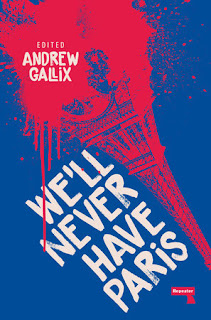I.
It's easy (and thus tempting) to look back on humanity's past and smile at some of the odd things that people - including philosophers and men of learning - used to believe.
I've already written, for example, about the theory of maternal impression - click here and here - but thought it might be interesting to briefly mention three other ancient truths that we now know to be false [1] ...
(i) The Wandering Womb
Belief in the wandering womb (as a cause of hysteria) can be traced all the way back to the ancient Greeks, though it persisted as a popular idea in European medicine well into the medieval and early-modern period.
For celebrated physicians like Aretaeus of Cappadocia, writing in the 2nd century AD, the uterus was a free-floating organ which resembled an autonomous creature happily living within the female body, sensitive to smells and always in search of fluids to sustain it.
It wasn't until our knowledge of anatomy improved from the 16th-century onwards that this idea of a wandering womb began to slowly lose credibility and female hysteria would eventually become a condition associated with the mind, rather than the uterus [2].
(ii) Spontaneous Generation
The theory of spontaneous generation held that living creatures (such as fleas and maggots) could arise from non-living matter (such as dust and decomposing flesh) and that such processes were all part of the natural order [3].
Again, we have the ancient Greeks to thank for this amusing idea.
For it was Aristotle who synthesised earlier explanations provided by the natural philosophers [φυσιολόγοι] for the mysterious appearance of organisms, into a coherent theory which would be taken as a matter of scientific fact for the next 2000 years (it wasn't until spontaneous generation was disproved by Louis Pasteur and others in the 1850s, that the term fell out of favour within scientific circles).
(iii) Bodily Humours
Even the father of Western medicine, Hippocrates, subscribed to a few mistaken notions, central amongst which was the idea that vital bodily fluids (or humours) determined human health and disposition.
Again, this theory persisted well into the modern era as doctors down the centuries vainly attempted to balance blood, phlegm, and two types of bile (black and yellow), in the belief that any excess or deficiency of any one of these four humours would result in illness or a bad character.
It wasn't until the advent of germ theory, which demonstrated that many diseases previously thought to be humoral were in fact caused by pathogens, that physicians were able to move on (though such ideas persist in those parts of the world that still practice traditional medicine).
II.
The point I'm trying to make here is twofold:
Firstly, I'm trying to illustrate how even the best minds can get things wrong and how certain ideas can become so ingrained within our thinking over such long periods of time, that they become unquestioned articles of faith and common belief (doxa).
Secondly, I'm trying to encourage readers not to simply look back and laugh at the mistaken ideas of antiquity, but ask themselves what cherished beliefs they might subscribe to as truths which will one day be exposed as fallacious and fantastical ...
I'm thinking, for example, of the still widespread belief in the psyche - a concept often used by people who think mind is something separate from (and other to) brain activity, but who still wish to sound rational rather than religious and so try to avoid words like soul or spirit.
Like all of the ideas examined above, this one can be traced back to the ancient Greeks; ψυχή is central to the philosophy of Plato, and Aristotle wrote a hugely influential work on the subject. Indeed, the latter's theory of the three souls - vegetal, animal, and human - would dominate the field of psychology until the 19th century.
I'm reminded at this point of Nietzsche's realisation that one day we will have to overcome the last trace of Greek influence on our thinking - as beautiful and as profound as it may have once seemed - and take a hammer to all the old idols of the mind [4] ...
Notes
[1] The big one, of course, would be God, but I can't imagine anyone reading TTA needs reminding of the circumstances surrounding his death.
[2] Today, of course, hysteria is no longer a clinically recognised condition and no one thinks the womb a thirsty roaming animal.
[3] The imaginary process by which life was believed to routinely and rapidly emerge from
non-living matter (such as the seasonal generation of mice and other animals from the mud
of the Nile), is sometimes referred to as abiogenesis. It should be noted, however, that spontaneous generation has no operative principles in common with the modern hypothesis of
abiogenesis used within evolutionary biology, which argues that life arose from simple organic compounds over a time span of many millions of years.
[4] It might be argued that the analytic philosopher Paul Churchland has pushed philosophising with a hammer to its extreme in his eliminative materialism, which, as Nietzsche might have said, is radikal bis zum Verbrechen.
Churchland is convinced that neuroscience will eventually spell the end for psychology, which he thinks a fundamentally defective and confused theory. The problem, however, is whilst with hindsight we can see the inadequacies and absurdities of ancient theories, it's not so easy to see these within contemporary theories that remain part of our Lebenswelt and which the majority of people still believe to be not merely true, but blindingly obvious to anyone with common sense.
Readers interested in Churchland's work might like to see his crucial essay 'Eliminative Materialism and the Propositional Attitudes', in The Journal of Philosophy, Vol. 78, No. 2 (Feb 1981), pp. 67-90. I refer to this essay in a previous (and related) post to this one: click here.










